Although my family grew up homesteading - canning and preserving most of what we ate - applesauce wasn’t in the lineup. I don’t know why, but we never ate applesauce. It's likely my father didn’t like it, and his palette ruled what landed on the dinner table. I certainly ate applesauce when it was served at school (you know the kind that comes out of a giant can), and I have been served the regular old applesauce that you buy off the shelf at the grocery store. This kind of applesauce is pretty good but it isn’t something that I would ever go out of my way for.
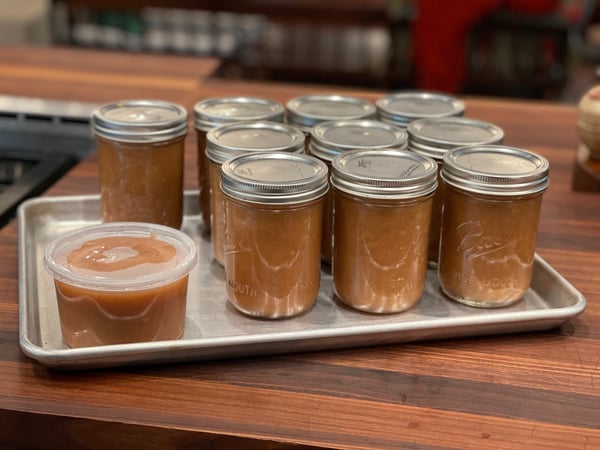 When I moved to Michigan, the third largest grower of apples in the country, I wanted to find ways to preserve the amazing flavor and freshness for the long winter ahead. Applesauce seemed like the best way to do that and boy, am I glad that I didn’t let my past experiences with applesauce hold me back!
When I moved to Michigan, the third largest grower of apples in the country, I wanted to find ways to preserve the amazing flavor and freshness for the long winter ahead. Applesauce seemed like the best way to do that and boy, am I glad that I didn’t let my past experiences with applesauce hold me back!
Homemade applesauce is so delicious, and the recipe below is one of the quickest ones you will ever find, largely because I don’t peel the apples. I have found that leaving fruit seeds and skins intact when I preserve fruits add a lot of flavor and color to recipes. I leave the seeds in my raspberry jam, the skin and seeds in my tomato juice and paste, I remove the peach skin and pits for my jam but wrap them in cheesecloth and cook the bundle with the jam for added flavor and color. I also find applesauce texturally and visually more appealing when I leave the skin on. It just happens to be much faster, too!
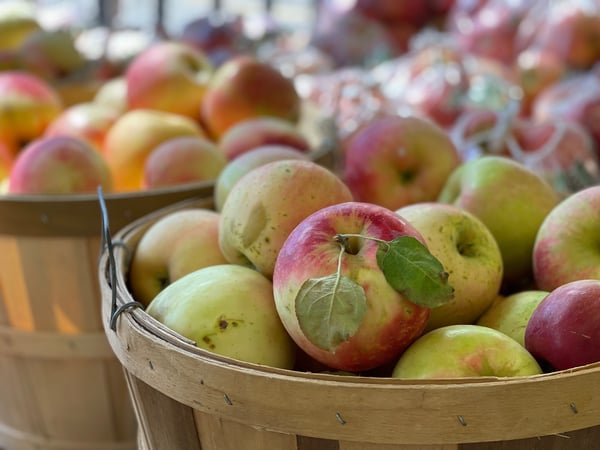 I didn’t set out to create a sugar free recipe, it just happened that I liked it better. If you want fruit to break down, like in the case of applesauce, you want to leave the sugar out of the recipe until after the fruit is cooked. If you want to keep the fruit intact like in the case of canning peaches or poaching pears, you cook the fruit in a sugar syrup, which keeps the fruit from breaking down. When making applesauce, you add the sugar at the end so the apples break down quickly. What I found is that once the apples were cooked, the applesauce simply didn’t need any sugar. The great thing about this recipe is that if you don’t agree, it is very simple to add sugar after the applesauce is cooked, just add it to your taste.
I didn’t set out to create a sugar free recipe, it just happened that I liked it better. If you want fruit to break down, like in the case of applesauce, you want to leave the sugar out of the recipe until after the fruit is cooked. If you want to keep the fruit intact like in the case of canning peaches or poaching pears, you cook the fruit in a sugar syrup, which keeps the fruit from breaking down. When making applesauce, you add the sugar at the end so the apples break down quickly. What I found is that once the apples were cooked, the applesauce simply didn’t need any sugar. The great thing about this recipe is that if you don’t agree, it is very simple to add sugar after the applesauce is cooked, just add it to your taste.
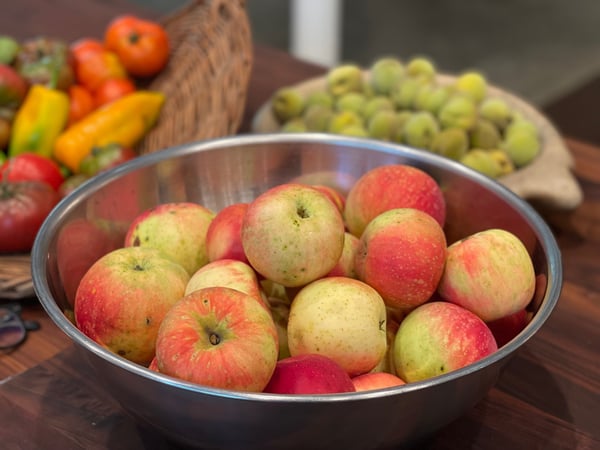
Sugar Free Applesauce
It is easy to cut this recipe in half if you want less applesauce or want to skip the canning process.
Scroll down for a printable version of this recipe
Yield: 8 pints
Prep time: 15 minutes
Cook time: 20 minutes for quick canning, 40 minutes for shelf stable canning
10 pounds, fresh apples
1/2 gallon fresh apple cider
2 Tablespoons cinnamon
1 teaspoon salt
Step 1: Prepare the Apples
If you use a sweeter apple like Honeycrisp, you will get a sweeter applesauce, and if you use a tart apple like Granny Smith you will have a tarter one. You can also combine apple varieties, just make sure they are very fresh and taste them before you cook them to make sure they are flavorful and not watery tasting. I think the Honeycrisp sweet apples make my favorite applesauce.
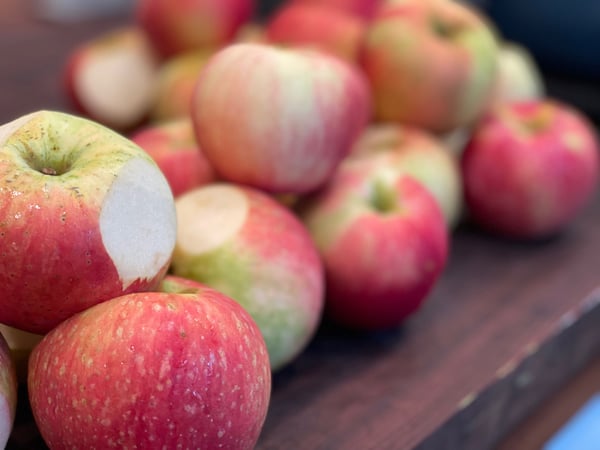
Wash the apples and remove any blemishes. Cut the flesh off the core and discard the core. Cut the apples into 1-inch pieces. Remember we are leaving the skin on so the pieces of skin will be in the sauce, they break down a bit, but larger than 1-inch pieces of apple will leave you with too chunky of sauce.
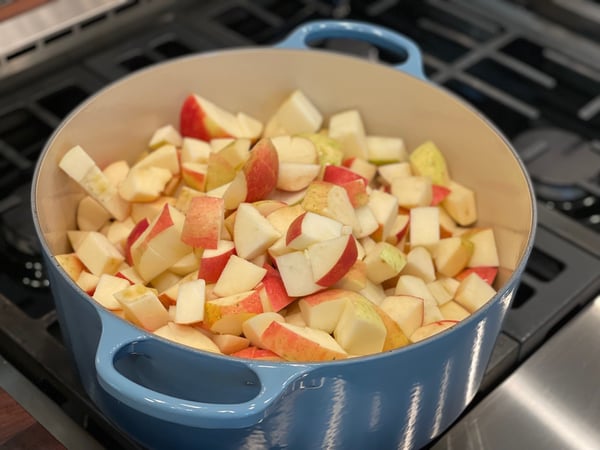 Step 2: Cook the Apples
Step 2: Cook the Apples
 Place apples, apple cider and cinnamon in a large stockpot and bring to a low boil. Cook until the apples break down and the liquid has reduced to a nice thick consistency, about 20 minutes. If you are canning the applesauce, it should remain hot until going into the jars, so turn the heat down to low but not off.
Place apples, apple cider and cinnamon in a large stockpot and bring to a low boil. Cook until the apples break down and the liquid has reduced to a nice thick consistency, about 20 minutes. If you are canning the applesauce, it should remain hot until going into the jars, so turn the heat down to low but not off.
 Step 3: Prepare the Canning Set up
Step 3: Prepare the Canning Set up
If you want the applesauce to be shelf stable, you will need to can it in a water bath. I have plenty of refrigerator space, so I prefer to do a quick can and store it in the refrigerator. This quick can method yields an applesauce that will last for 8 months in the fridge. Wash the pint jars and lids then sterilize the jars in a hot oven, 200 degrees for 20 minutes… while the apples are cooking. Take the hot applesauce and put it directly into the hot jars and screw on the lids. Within 30 minutes the jars should seal, you know this has happened when you push down on the lids and they don’t spring back. You will hear little popping sounds when the jars are sealing.
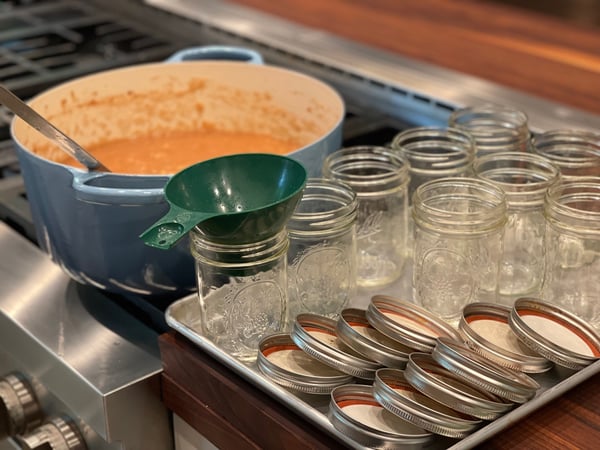 If you want the applesauce to be shelf stable, you will need to submerge the jars into boiling water for 20 minutes. See our canning guide for more information on hot water canning methods. It should last eight months if you do not add sugar and a year if you add sugar. Sugar is a preservative so it helps home canned food last longer.
If you want the applesauce to be shelf stable, you will need to submerge the jars into boiling water for 20 minutes. See our canning guide for more information on hot water canning methods. It should last eight months if you do not add sugar and a year if you add sugar. Sugar is a preservative so it helps home canned food last longer.
Use this applesauce as a condiment to grilled pork chops, as an ingredient in fall cakes or simply as a snack!
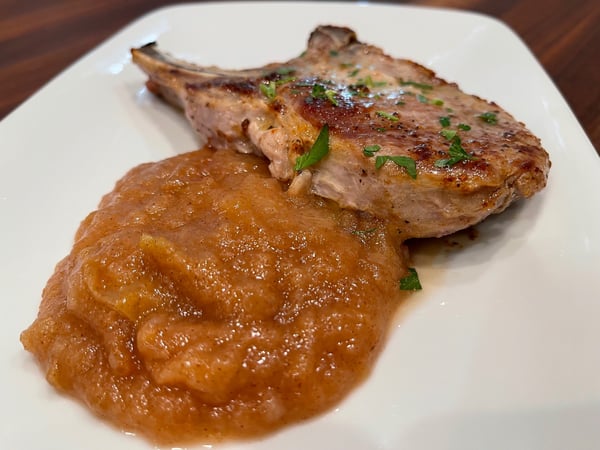 If you are looking for some more fall favorites, we have an amazing line up of in person and virtual programing. Don't miss these upcoming fall-focused classes:
If you are looking for some more fall favorites, we have an amazing line up of in person and virtual programing. Don't miss these upcoming fall-focused classes:
- Fireside Feast Demo on the Patio Friday, October 22 6:30pm Lincoln Square
- Virtual Fall Desserts Saturday, October 23 12pm CST
- Fall Dinner Party Demonstration Saturday, October 23 6pm Lincoln Square
- Fall Brunch Demo on the Patio Saturday, October 30 11:30am Lincoln Square
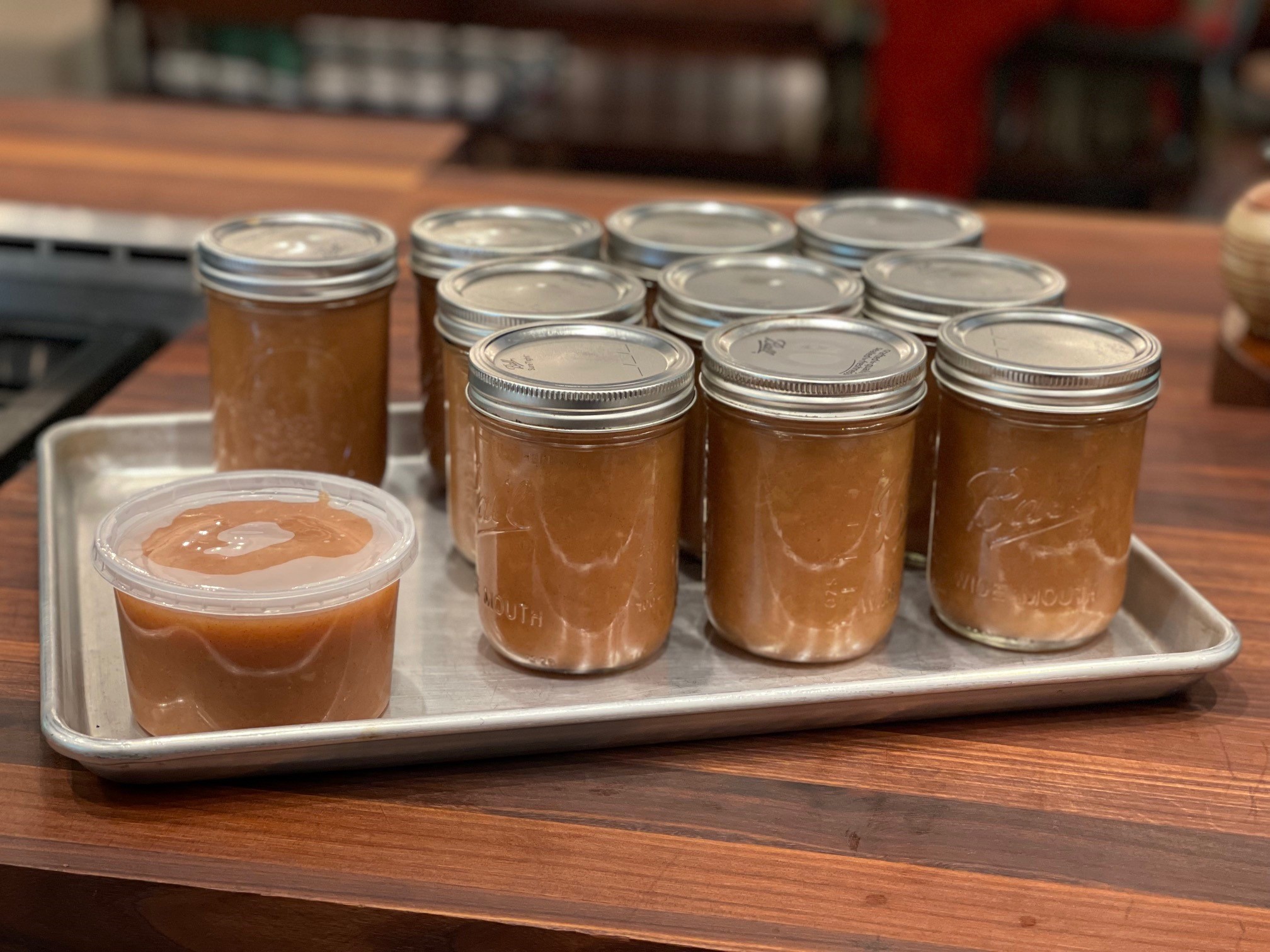
Sugar Free Applesauce
Ingredients
- 10 pounds, fresh apples
- 1 /2-gallon fresh apple cider
- 2 tablespoons cinnamon
- 1 teaspoon salt
Instructions
- Wash the apples and remove any blemishes. Cut the flesh off the core and discard the core. Cut the apples into 1-inch pieces.
- Place apples, apple cider and cinnamon in a large stockpot and bring to a low boil. Cook until the apples break down and the liquid has reduced to a nice thick consistency, about 20 minutes.
- For quick canning of applesauce to be stored in the refrigerator: Wash the pints jars and lids then sterilize the jars in a hot oven, 200 degrees for 20 minutes… while the apples are cooking. Take the hot applesauce and put it directly into the hot jars and screw on the lids.
- For shelf stable water bath canning: Submerge the jars into boiling water for 20 minutes. Any jars that do not seal should be placed in the refrigerator.











